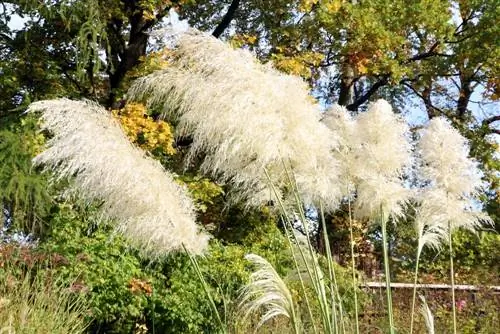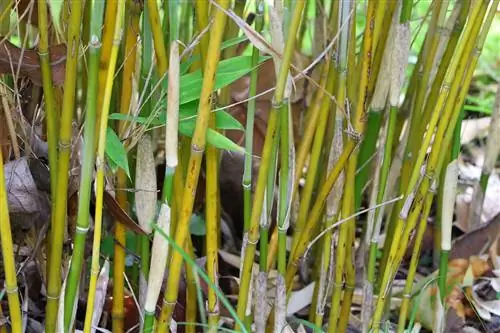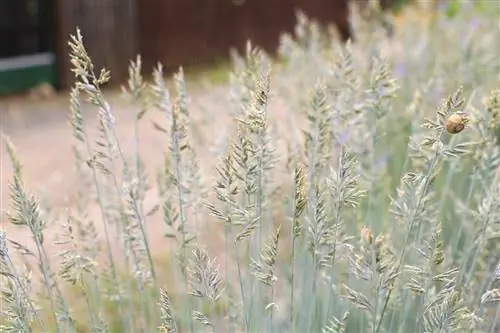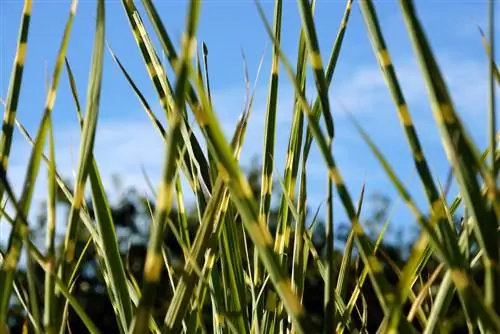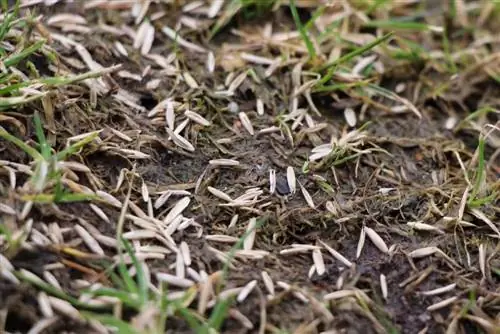- Author admin [email protected].
- Public 2023-12-17 03:39.
- Last modified 2025-01-24 12:45.
Nature offers a variety of beautiful, evergreen ornamental grasses that can become a real highlight in any garden, on the terrace or balcony. The attractive grasses require little care, but they need to be cut at least once a year so that they remain beautiful and can sprout again. This pruning has a positive effect and should therefore not be missed. But if you know when and how to do it, you won't have much to do with it either.
Definition
Evergreen ornamental grasses are among the hardy perennials. These form again from the roots in spring. Therefore, the grasses do not need to be pruned, only the old stalks need to be removed. To protect the plant from frost in winter, the upper parts of the plant should remain standing over the winter. Many different varieties belong to the evergreen ornamental grasses, which can vary greatly in shape and appearance. But they can also differ in terms of cut, because not every grass necessarily has to be cut. Most of the grasses are winter hardy and can overwinter in the garden bed. The old stalks and leaves offer them protection, which should therefore not be removed before winter. And they also offer a highlight when cultivated in a pot on the balcony or terrace. The most beautiful and popular evergreen ornamental grasses include:
- Pampas grass, pruning in spring
- Pennisetum grass, cut back in spring
- Bearskin grass, low variety, without pruning in spring
- Pipe grass, cut close to the ground in spring
- Zebra grass, cut in spring
- Blue grass, dead stalks can be pulled out in spring
- Sedge, cutting is not necessary, old stalks can be pulled out
- Blue fescue grass, low, pruning in spring is not necessary
- Bamboo, pulling out dead stalks in spring
- Reed grass, cut back in spring
Tip:
If you don't know exactly whether the old stalks of your cultivated grass need to be cut or can be pulled out, you can easily test this out. If the blades do not simply come out of the ground with a slight tug, the grass in question needs to be cut.
Autumn cut
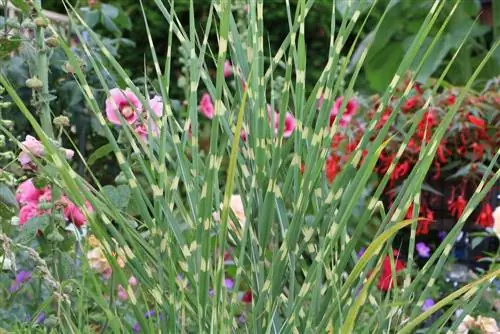
There is actually no such thing as a cut in autumn in the traditional sense. Because most evergreen ornamental grasses only just come into their own in autumn. With the often impressive growth forms of their stalks, flowers and leaves and the striking colors, they are a real eye-catcher, especially in the otherwise rather dreary autumnal garden. But if you don't want your grass to multiply uncontrollably, you have to make a small cut in autumn. To do this, however, only all withered flower spikes are cut before the seeds form. For some varieties this can be done early in autumn, for other grasses it can only be done later. The blades of grass and leaves should ideally be spared when cutting in autumn. This way the plant is better protected for the winter. Further arguments for not pruning before winter are as follows:
- robust varieties of ornamental grass offer a beautiful eye-catcher even in winter
- especially if frost or light snow falls on it
- small animals that overwinter in the garden find shelter
- therefore also a good option for a natural garden
Tip:
If you cut your ornamental grass before winter, you risk water getting into the blades and the grass as a whole will rot in the cold. Then it no longer sprouts in the spring. The old blades of grass also protect the plant from the cold in winter.
Spring cut
The ideal time to cut the different types of ornamental grasses is in the spring before new growth. This cut should be done regularly so that the ornamental grasses sprout again and show their full beauty in summer. This is because caring pruning has a positive effect on the growth of many plants. They grow back more luxuriantly and then show their full splendor. But there are many different types of ornamental grasses, all of which require different care and therefore a different approach in spring. This includes low-growing varieties as well as high-growing ones.
It makes more sense not to cut the low-growing varieties. The main thing to pay attention to is the variety and its care instructions. However, it is important that every cut is not made so deep that the fresh, inner core becomes visible. There are also many varieties of tall-growing ornamental grasses from which the dead stalks can be removed in spring simply by pulling them out by hand. When cutting in spring, you should therefore proceed as follows:
- check whether the cultivated ornamental grass needs to be cut
- often the dead stalks can simply be plucked out
- all dead shoots must be removed
- Make sure that everything is removed in the spring
- if you need a cut, don’t cut too deep
- dead leaf residues curl around the first new leaf shoot
- will now be cut here, be careful not to cut into the new green
- then the new tip sprouts brown
- if it happened, remove the brown tip
- cut as early in the year as possible, then the grass won't sprout yet
- this way you can avoid damaging new shoots
- cut to a few centimeters above the ground
- Ideally wear gardening gloves
- some of the grasses can be very sharp
- cuts on the hands could occur
Tip:
Some grasses should be cut in winter. As with all plants, there are exceptions to cutting grasses. The bushy varieties of grass develop much more lushly if they are cut to within five centimeters of the ground in the middle of winter, around February.
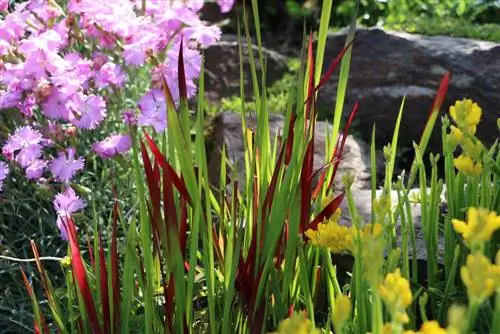
Conclusion
The hobby gardener can achieve a green garden well into late autumn and early winter with the beautiful evergreen ornamental grasses. The graceful grasses with their swinging stalks do not require much care. The only thing that is important is an annual cut so that the plants can sprout again in spring and develop their beauty again. To ensure that the grass survives the winter undamaged, it is usually not cut in the fall. Only the dried flower spikes are now removed so that the grass cannot spread unhindered through seeds in the garden. In spring, care can then begin again with a cut or pulling out the old stalks.

